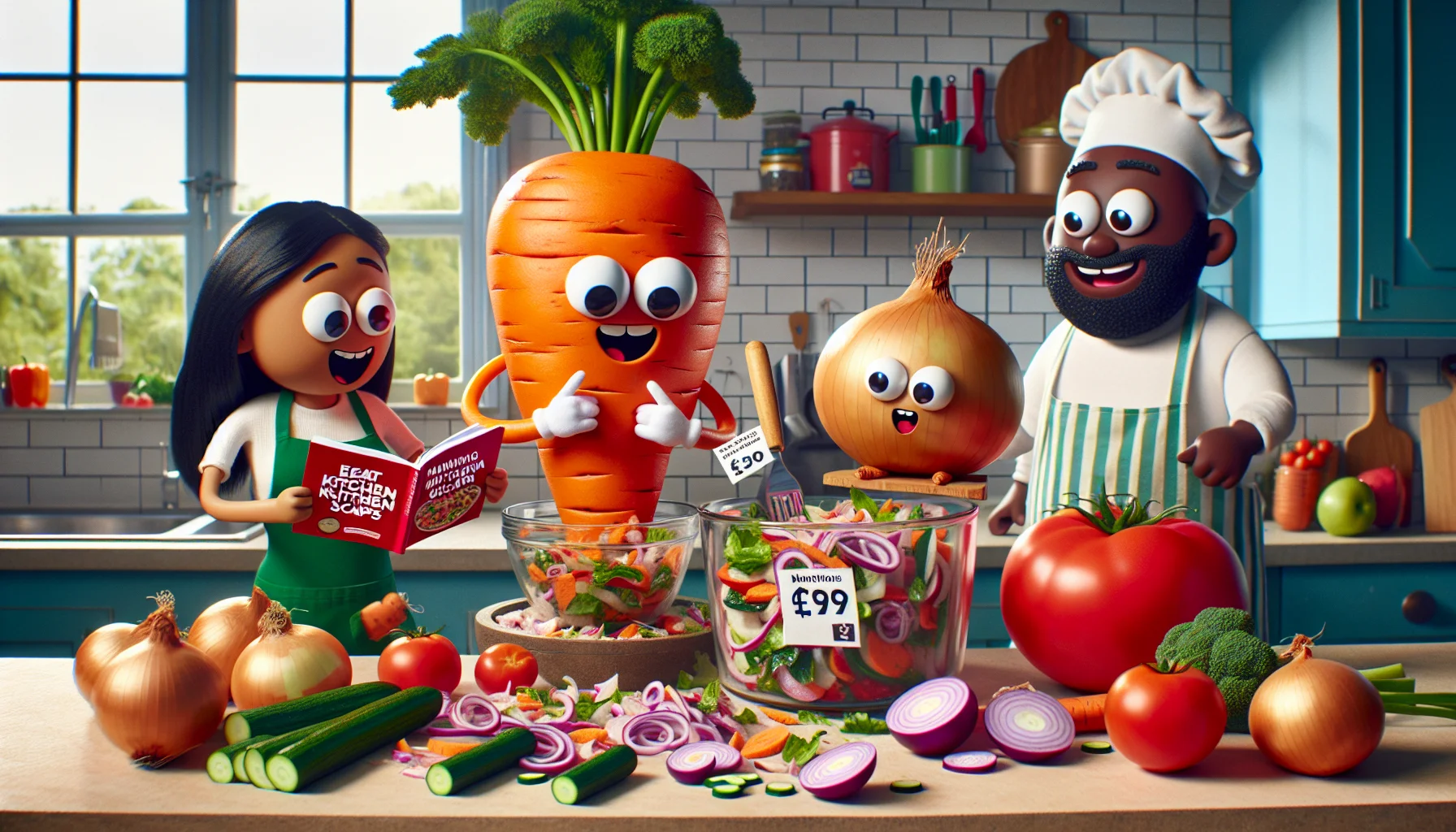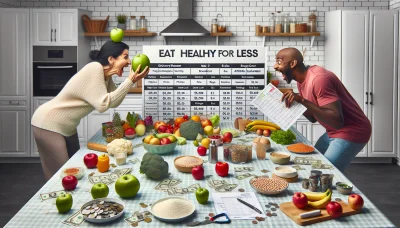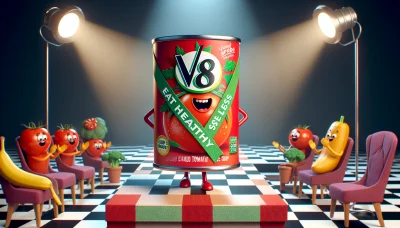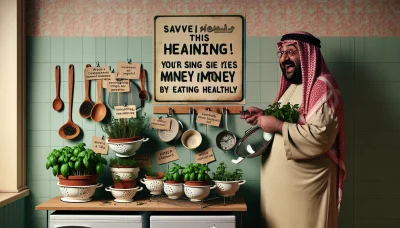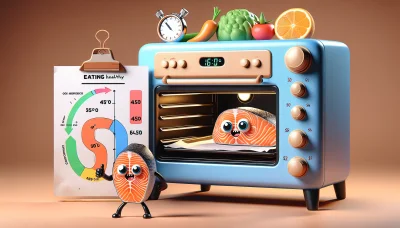Maximizing Kitchen Scraps Quiz
Test Your Knowledge
Question of
Maximizing Kitchen Scraps for Healthy Eating
Reducing food waste is not only beneficial for the environment but can also contribute to a healthier diet. Many kitchen scraps, often discarded without a second thought, are rich in nutrients and can be repurposed in creative and healthy ways. By incorporating these leftovers into our meals, we can enhance the nutritional value of our diet while minimizing waste. This approach encourages a more sustainable and mindful way of cooking and eating, aligning with both health goals and environmental consciousness.
Benefits of Using Kitchen Scraps
- Reduces food waste, contributing to environmental sustainability.
- Enriches soil when composted, improving garden health and productivity.
- Saves money by maximizing the use of purchased foods.
- Provides a natural way to add nutrients and flavor to meals.
- Encourages creativity and innovation in cooking.
- Helps in reducing the carbon footprint by minimizing the need for waste management resources.
- Supports a more sustainable food system by promoting the full utilization of resources.
Top Kitchen Scraps to Reuse
Reusing kitchen scraps is not only a step towards more sustainable living but also a way to unlock hidden nutritional benefits. Many parts of fruits and vegetables we usually throw away are packed with vitamins and minerals. By finding creative ways to incorporate these into our meals, we can reduce waste and boost our health.
- Potato Skins: Rich in fiber, vitamins C and B, and minerals such as potassium, magnesium, and iron. Perfect for making crispy baked skins or adding to soups for extra flavor and nutrients.
- Carrot Tops: Loaded with vitamin C, calcium, and potassium. They can be used to make delicious pesto, salad dressings, or added to soups and stews.
- Broccoli Stems: Contain high levels of fiber, vitamin C, and calcium. They can be shredded into slaws, diced for stir-fries, or blended into soups and smoothies.
- Watermelon Rind: Packed with citrulline, which has antioxidant properties and can improve circulation. Pickle them, or blend into smoothies and jams.
- Apple Peels: High in fiber and vitamins A and C. They can be dried and eaten as a snack, or boiled to make a healthy tea.
- Banana Peels: Rich in potassium, dietary fiber, and several essential amino acids. Use them to tenderize meat, or blend into smoothies and baked goods.
Creative Recipes Using Kitchen Scraps
Don't throw away those kitchen scraps just yet! With a little creativity, you can transform peels, stems, and other leftover bits into delicious, nutritious dishes. Not only does this approach help reduce food waste, but it also encourages a more sustainable way of cooking. Here are some simple and healthy recipe ideas to get you started.
- Broccoli Stem Pesto - Use the often-discarded stems of broccoli to make a delicious and hearty pesto sauce.
- Potato Peel Chips - Instead of tossing out those potato peels, toss them with a little olive oil and your favorite spices, then bake until crispy for a healthy snack.
- Carrot Top Salad - Don't discard those nutritious carrot tops! Chop them up and mix them into a salad for an extra dose of greens.
- Watermelon Rind Pickles - Transform watermelon rinds into tangy, sweet pickles that are perfect for snacking or adding to salads.
- Apple Peel Tea - Simmer apple peels with cinnamon and cloves to make a comforting and aromatic tea.
Storing and Managing Kitchen Scraps
Maximizing the usage and nutritional benefits of kitchen scraps starts with proper storage and management. To ensure your kitchen scraps are put to the best use, consider separating them into compostable materials and those that can be reused or repurposed. For compostable scraps, such as fruit and vegetable peels, coffee grounds, and eggshells, keep a dedicated container in your kitchen. This container should be airtight to minimize odors and should be emptied into your compost bin regularly. For scraps that can be reused, like vegetable ends or stale bread, store them in clear containers in the refrigerator or freezer until you're ready to use them in stocks, broths, or croutons, respectively.
Composting is a fantastic way to recycle kitchen waste into nutrient-rich soil for your garden. To start composting, mix your kitchen scraps with dry materials like leaves or shredded paper to balance moisture levels. Turn your compost pile regularly to aerate it, speeding up the decomposition process. Remember, not all kitchen scraps are suitable for composting. Avoid adding meat, dairy, or oily foods to your compost bin, as they can attract pests and create unpleasant odors. With these tips, you can turn your kitchen scraps into valuable resources for your garden and reduce your household waste significantly.
The Environmental Impact of Reducing Food Waste
Maximizing kitchen scraps plays a crucial role in reducing food waste, contributing significantly to environmental conservation. By finding creative ways to reuse food scraps, such as composting or using them in new recipes, we can significantly decrease the amount of waste sent to landfills. This reduction in landfill waste not only conserves space but also reduces methane emissions, a potent greenhouse gas that contributes to climate change. Moreover, minimizing food waste helps conserve the resources used in food production, such as water, land, and energy, further reducing the environmental footprint of our food systems. Ultimately, taking steps to reduce food waste through the maximization of kitchen scraps is a simple yet effective strategy for promoting environmental sustainability.
Getting Started with Maximizing Kitchen Scraps
Embarking on the journey of incorporating kitchen scraps into your diet is not only a step towards healthier eating but also a stride towards a more sustainable lifestyle. Begin by saving peels, stems, and leaves of vegetables and fruits, which are often discarded despite their nutritional value. For instance, carrot tops can be transformed into a delicious pesto, while potato peels can be baked into crispy snacks. Start small by choosing one or two types of scraps to focus on, and experiment with different recipes that incorporate these items. Remember, the key is creativity and an open mind. Embrace the process of learning and experimenting, and soon, you'll find yourself making the most out of your kitchen scraps, reducing waste, and enhancing your meals with added nutrition and flavor.
